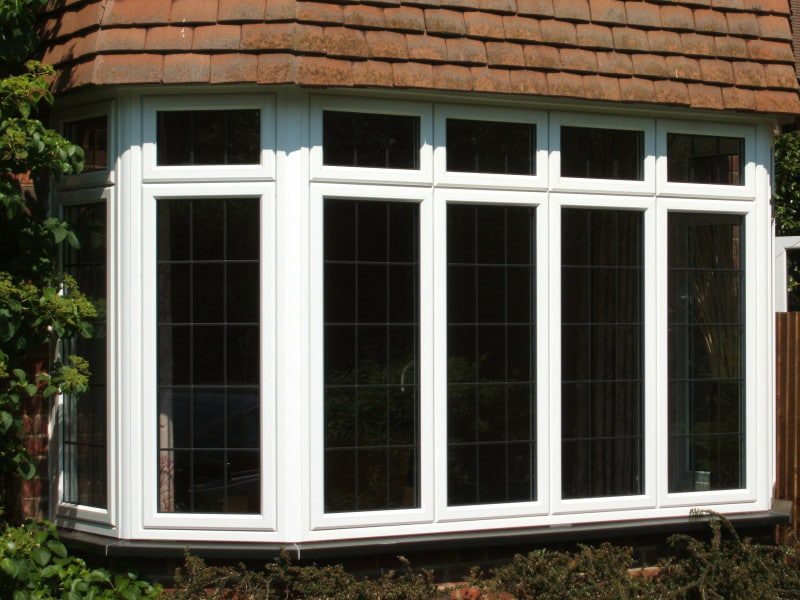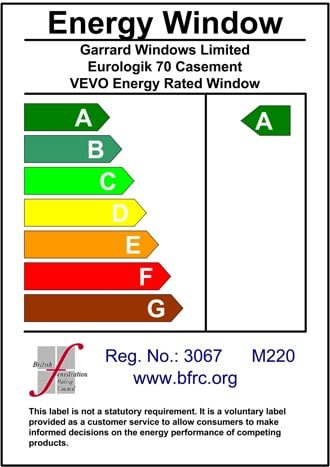If you installed double glazing 20 or more years ago it is quite likely simple weather protection, draught-proofing and the replacement of existing windows were the main reasons for your purchase.
Early window systems were simple products designed to accept two pieces of glass with what today would be classed as marginal increases in security and performance. However, the introduction of Window Energy Ratings has lead to significant improvements.

Early double glazing was there to provide an instant improvement to our homes with the benefits that two pieces of glass brought over one. The double glazed units of early replacement windows and doors was simply a sealed unit with air space in between.
The thermal performance of frames did not come into consideration. Indeed, early pvcu or aluminium window frames were non-insulated standard sections. Double glazing is believed to have originated in the 1930’s in America but took nearly 40 years to reach the UK and become a standard for window replacements.
How did early double glazing perform compared to today?
U Values and Solar gain were not a consideration for early variants of double glazed windows. Whilst single glazed windows were capable of drawing in warmth from the sun, the one piece of glass couldn’t retain the heat coming in. Therefore the addition of the extra pane of glass made a noticeable improvement with the benefits instantly felt.
The early nineties saw the addition of thermally broken aluminium windows as well as improvements in double glazing technology. U Values and Window Energy Ratings were performance figures that the public was still not aware of. Window systems were designed around aesthetics before performance. Today this is the reverse – windows are designed around performance with aesthetics still playing an important part but arguably as a secondary consideration. The U Values of early windows and doors are calculated at approximately 5.9Wm2K for single glazed windows, 2.9Wm2K for double glazed windows. This is a huge difference from modern windows and those designed to meet passivhaus standard which are well below 1.0Wm2K. The difference between modern and original double glazed windows is clear to see.
What do we expect from modern double glazed windows?

Irrespective of material, double glazing is required to be attractive, secure, weather resistant and energy efficient. It is Building Regulations that now dictate the energy efficiency of current and future windows and phrases such as “will meet and exceed current and future Building Regulations” is well used by many designers and producers of aluminium, PVCu and timber doors and windows. We expect our windows to keep even more of our heat in and play their part in reducing heat loss from the home and ultimately reducing energy bills.
Triple Glazing is the latest trend to hit the UK home improvement market although this has been in use in Europe and colder countries for many years already. An A, B or C rated window is acceptable as meeting current building regulations but window designers today are embracing modern materials such as polyamide, polyurethane, argon gas, warm edge spacers, low emissivity coatings to work together in giving us greater energy efficient windows and doors.
What is a window energy rating?

If you are looking at new windows or doors how important are the window energy ratings to you?
With many window companies now advertising an A+12 or more, do the differences between A, B or C rated windows matter? Window energy ratings now vary from A right down to G and explained with the energy rating labels that we are used to on home appliances as well as windows. Energy ratings are also used for Energy Performance Certificates (EPC’s) for homes whether bought or rented.
To arrive at the Window Energy Rating the following Values all come into consideration.
The Energy Index
The Energy Index is used as an indicator for the heat or energy gained as well as expelled through any window.
The U Value
The U Value is thermal transmittance. This is where the all-important glass comes in. The high specification the glass, the lower the U Value.
The G Value
G Value is the solar gain/loss through windows. The higher the G Value, the more solar gain through a window.
The L Value
The L Value relates to leakage of air through a window and with any well designed, well sealed and weather resistant window this figure must be zero.
Should Window Energy Ratings matter to you?
Ultimately it is up to you to determine how the varying U Values of all the different types of windows will affect the energy conserved and used. An experienced window professional will not simply say “our windows have the best energy rating” but will be able to accurately tell you how these different ratings matter.
However, B and C rated windows should not be discounted in favour of an A-rated window in every case. We must also remember that the purchase of new windows and doors is an “emotional” experience, so customers must find windows and doors attractive to them and right for their home even if their energy ratings may be less than those advertising the highest possible ratings.
Some Clarification on A Ratings

There is an excellent article from the Council for Aluminium in Building explaining the differences between the BFRC and the BRE Green Guide ratings.
The Council For Aluminium in Building(CAB) is a really good organisation with memberships from across the industry.
In this guide the CAB explain that there are presently three different schemes that mention ‘A’ ratings. They say:
Right now we have three schemes that contain references to ‘A’ ratings and which form part of most tender specifications. They are:
British Fenestration Rating Council (BFRC) – Window Energy Rating (WER) scheme with Bands A to E: www.bfrc.org
BRE Green Guide (GG) to specification – Environmental profiling system for building materials and components with Bands A+ to E: www.thegreenguide.org.uk
BRE Environmental Assessment Method (BREEAM) – a range of products that use GG ratings as part of their building credits system: www.breeam.org/index.jsp
The CAB make an excellent point in obtaining clarity when you are asked to supply an A rated product.











